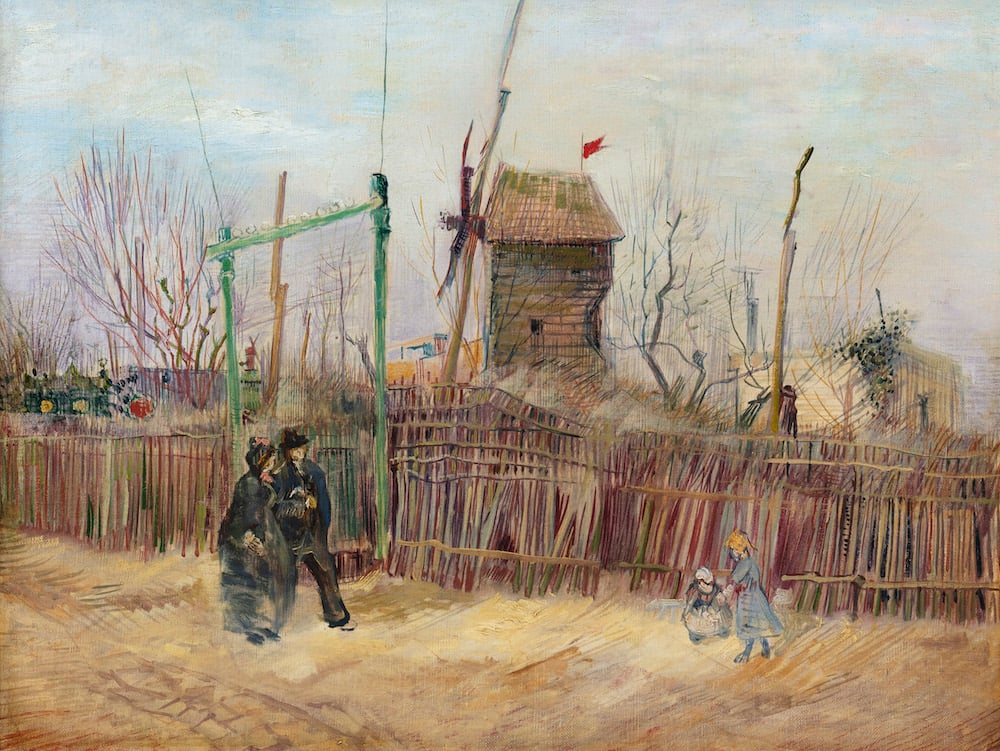
A rare Vincent van Gogh landscape that has been held in the same private French collection for more than a century, will be sold at auction for the first time in a joint sale at Sotheby’s and Mirabaud Mercier, a Paris auction house, next month. It is estimated to sell for $6 million to $9.7 million (€5 million to €8 million).
The painting has never been publicly exhibited, though it has been well documented and has appeared in seven catalogues over the years. Van Gogh painted the work in the spring of 1887, during a two-year sojourn in Paris, when he was living with his brother Theo on the Rue Lepic. The artist was fascinated by the mix of pastoral and urban elements then in Montmartre, where the “mills blended with the cabarets,” according to a statement from Sotheby’s.
“We were immediately captivated” upon seeing the work in person for the first time, said Mirabaud Mercier owners Claudia Mercier and Fabien Mirabaud in a statement.
The pair advised the clients—descendants of the original owners—and proposed a partnership strategy with Sotheby’s to maximize the pool of buyers and collaborate on a marketing strategy. Prior to the March 25 sale, the painting will be exhibited in Amsterdam, Hong Kong, and Paris.
“There are few comparable works from the Paris period that have come to the market. We chose both a conservative and attractive estimate,” said a representative of Sotheby’s Paris.
In 2019, Sotheby’s sold a Parisian-themed work by Van Gogh, People Strolling in a Park in Paris, for $9. 7 million in New York, while another work from 1882, during the artist’s “Dutch” period, brought in €7 million in France.
“Very few paintings from Van Gogh’s Montmartre period remain in private hands, with most of the series now held in prestigious museum collections around the world,” said Aurélie Vandevoorde and Etienne Hellman, senior directors of Sotheby’s Impressionist and modern art department in France.
The work reflects Van Gogh’s exploration of a new city as well as his first encounter with the Impressionists and other avant-garde painters in Paris, which in turn sparked a transformation of his palette. “Gone were the dark tones of his early works, replaced with color in all its brilliance,” Sotheby’s writes in a statement. “It was in Montmartre, during these formative years, that the foundations of his inimitable style were established.”